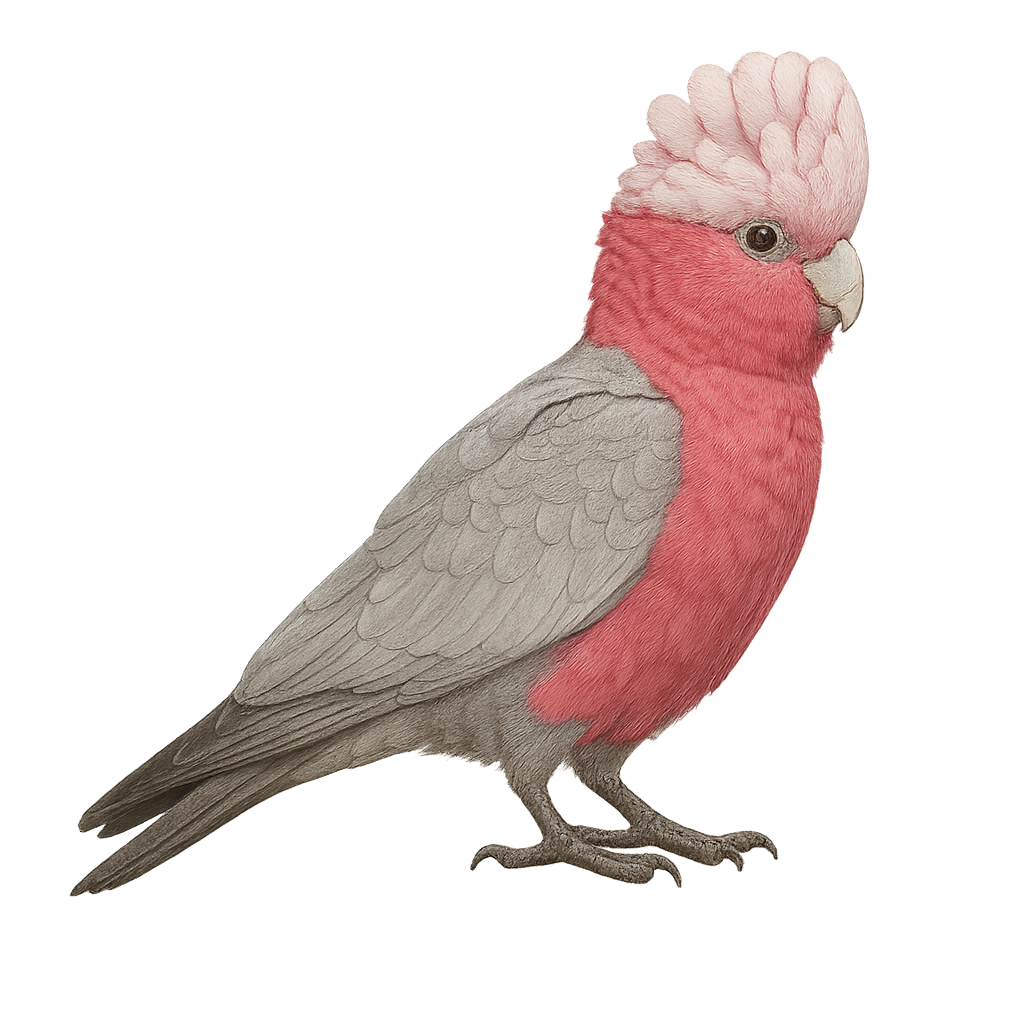Your wildlife photography guide.
Explore the galah in detail, study its behavior, prepare your shots.
Where to observe and photograph the galah in the wild
Learn where and when to spot the galah in the wild, how to identify the species based on distinctive features, and what natural environments it inhabits. The WildlifePhotographer app offers tailored photography tips that reflect the galah’s behavior, helping you capture better wildlife images. Explore the full species profile for key information including description, habitat, active periods, and approach techniques.
Galah
Scientific name: Eolophus roseicapilla

IUCN Status: Least Concern
Family: CACATUIDAE
Group: Birds
Sensitivity to human approach: Suspicious
Minimum approach distance: 10 m
Courtship display: July to October
Incubation: 23-25 jours
Hatchings: July to November
Habitat:
Grasslands, farmlands, savannas, open woodlands
Activity period :
Primarily active during the day, with peak activity in the morning and late afternoon.
Identification and description:
The Galah, or Eolophus roseicapilla, is a distinctive Australian bird known for its striking pink and grey plumage. It measures about 35 cm in length and weighs between 270 and 350 grams. Its strong beak is well-suited for its diet of seeds, fruits, and vegetation. Highly social and intelligent, it lives in large flocks and is often seen in open areas such as grasslands and farmlands. The Galah is famous for its aerial acrobatics and loud calls. It adapts well to captivity, making it a popular pet, although it requires significant attention and mental stimulation.
Recommended lens:
400 mm – adjust based on distance, desired framing (portrait or habitat), and approach conditions.
Photography tips:
To photograph the Galah, aim for early morning or late afternoon when the light is soft. Use a 400mm lens or longer to capture details without disturbing the bird. Be patient and observe its social behaviors, especially its aerial acrobatics. Grasslands and farmlands are ideal locations to spot it. Ensure you maintain a safe distance of at least 10 m to avoid scaring it.
The WildlifePhotographer App is coming soon!
Be the first to explore the best nature spots, track rutting seasons, log your observations, and observe more wildlife.
Already 1 430 wildlife lovers subscribed worldwide

